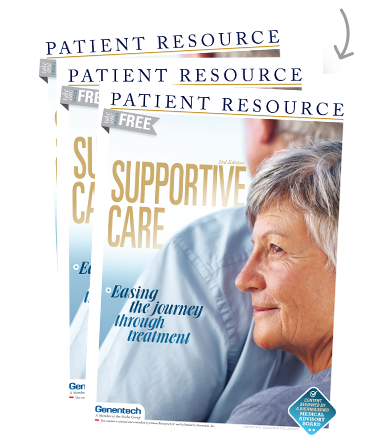Hair Loss
Alopecia, commonly referred to as hair loss, is the abnormal loss of hair on the head and elsewhere on the body, such as eyelashes, eyebrows, in the armpit and pubic area, and on arms and legs.
What causes hair loss?
Chemotherapy, radiation therapy and some other drug therapies work by killing rapidly dividing cells. Because cells in the hair follicles divide rapidly, they may be damaged by these treatments.
When does hair loss typically occur?
Hair loss from drugs usually begins within 10 to 14 days after the start of treatment and increases within 1 to 2 months. In some instances, hair loss may begin with a sensation of the scalp itching, and within a few hours, hair begins to fall out. Hair on the head often falls out in clumps during shampooing or brushing, or even during sleep.
Hair usually begins to grow back 4 to 6 weeks after the end of treatment with drug therapy. In general, it grows at a rate of about one-quarter inch per month. For radiation therapy, only the areas where radiation is directed experience hair loss. Hair tends to grow back after several months, but it may be thinner or a different texture.
Not every person will lose their hair, even when taking the same drug or having the same treatment that causes hair loss in someone else. In some instances, hair loss is permanent.
Some drug therapies, such as hormone therapy, immunotherapy and targeted therapy, do not cause hair loss. Instead, hair may thin, become dry or change in texture.
Preventing some hair loss may be possible with a technique called scalp cooling. A helmet-shaped cooling cap is worn before, during and after chemotherapy is given. The cold temperature reduces blood flow to the head, preventing the chemotherapy drugs from destroying the cells in the hair follicles. To learn more about the risks and benefits and insurance coverage, talk with your health care provider before treatment begins.
How you can help manage hair loss
First, decide what will make you most comfortable with your appearance.
Consider wearing a wig. To make it eligible for health insurance coverage, request a prescription from your health care provider for a “skull prosthesis for hair loss caused by radiation or chemotherapy treatment.” Contact your local American Cancer Society office to learn about free wigs.
Use a scarf, hat, cap or other head covering. Your scalp may be tender from treatment, so protect it against cold and sunlight. Use sunscreen when you are outside.
Be gentle to your hair as it grows back or as it thins. Use a soft-bristle brush and/or a wide-toothed comb. Avoid shampoos with strong chemicals or fragrances and hair dryers, curling irons, straighteners and elastics that pull on or break hair. Do not bleach or color your hair or get a permanent. Sleep on a satin pillow case to decrease friction.
When to call your health care provider
Talk about hair loss before treatment so you are prepared. Ask for referrals to support groups. Learning how other people cope with hair loss can also help.



